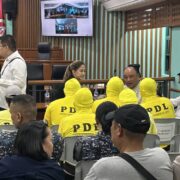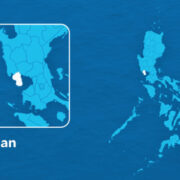Why digitization is critical for PH Customs to stay globally competitive

Customs operations serve as the gatekeepers of international trade, regulating the flow of goods across borders and ensuring compliance with trade laws and regulations. These operations play a crucial role in facilitating trade by enforcing import and export regulations, collecting duties and taxes, and protecting against illegal trade practices.
In today’s globalized economy, the volume of cross-border trade has increased significantly, leading to a greater need for efficient and effective customs operations. Efficient customs operations are essential for the competitiveness of countries in the global market. Delays in customs clearance can result in increased costs for traders and hinder the timely delivery of goods. By streamlining customs processes and implementing modern technologies, countries can improve the efficiency of their customs operations and enhance their competitiveness in the global trade arena.
The Philippine customs system is confronted with substantial challenges stemming from its outdated practices and lack of digitization. A 2022 study released by the Bureau of Customs (BOC) revealed that most delays in import processing are attributed to pre- and post-customs processes. The reliance on manual entry for product information reflects systemic weaknesses in our customs operations that hinder the system’s ability to meet the demands of modern trade. The delays can also be attributed to the submission process of documents, with permits from government agencies not directly transmitted to the BOC. These practices underscore the necessity of improving customs digitization and enhancing trade facilitation.
The manual processes in the customs system make it difficult to keep up with the increasing volume and complexity of international trade. As trade continues to grow, customs operations become more challenging, requiring greater efficiency and transparency to ensure the smooth flow of goods across borders.
Digitization has been contributing to the dominance of several countries in global trade. China, for instance, has made significant strides in modernizing its customs operations. Its customs have adopted a systematic approach to product identification, moving away from traditional processes to digital systems. In the past two years, over 780,000 products from Chinese imports have been verified across 99 countries with the use of the Global Trade Item Number (GTIN), a unique identifier for trade items that is commonly encoded into barcodes.
The shift toward digitalization has led China’s customs agency to mandate the inclusion of GTINs for certain products such as infant food, wheat-based foods, biscuits, beer, imported wines and liquors, and cosmetics since 2022. This requirement has enabled automatic product identification and the determination of tariff classifications. Through this system, a consistent application of tariff rules is enforced, improving transparency for both customs authorities and businesses and reducing opportunities for fraud or discrepancies.
Simplified system
GTINs allow for the automatic identification of imported products, with their classification, country of origin and specification appearing in the single window system if their GTIN is provided. This represents a key step for the adoption of barcodes in customs clearance, which has helped China to standardize customs declaration procedures and efficiency. As goods are traded globally, border agencies worldwide can be overwhelmed by the growth in the volume of trade and the increasing regulatory requirements are putting pressure on border agencies to collect taxes, tackle illicit trade and facilitate legitimate trade.
Adopting the use of GTINs has standardized the product attributes needed in customs declarations, helping China avoid information inconsistencies that often occur when importers manually fill in product information as it circulates across multiple steps of the supply chain process. This shift has not only improved efficiency but also enhanced transparency and reduced instances of corruption in the entire customs ecosystem.
Single electronic platform
This standardization is particularly beneficial when coupled with the Single Window System implementation. The system allows traders to submit all required documents through a single electronic platform, streamlining customs procedures and reducing the time and cost associated with clearance processes. It simplifies the complexities of import, export and transit-related regulatory requirements, benefiting businesses engaged in cross-border trade. By eliminating the need for traders to interact with multiple agencies separately, all clearances can be obtained through a single electronic interface, enhancing transparency and efficiency in trade operations.
Thanks to various government initiatives and trade agreements, the Philippines has experienced a significant increase in international trade. The Bangko Sentral ng Pilipinas reported a 5.4-percent increase in the country’s exports in 2023, translating into an increase of $48.42 billion from $45.95 billion in 2022.
Modernization imperative
To take advantage of this increase in trade and enhance its operations, the Philippine customs system must undergo a modernization effort, drawing valuable lessons from China’s successful example. Embracing digitization is a pivotal step toward efficiency and transparency. By implementing digital systems for product identification and customs procedures, the country’s customs system can streamline processes and minimize the risk of errors and corruption.
Much like China’s adoption of the GTIN standard, the integration of a simple barcoding system can revolutionize customs operations in the Philippines. One of the steps taken for the digitization efforts in the country is the adoption by the BOC of the Electronic-to-Mobile (e2m) System. This system, introduced in 2004, is an internet-based technology that automates customs procedures and significantly reduces processing times for import and export transactions. Through the system, the BOC can streamline its core processes and improve trade facilitation between the agency and its stakeholders, other government agencies as well as reduce human interference that will induce corruption.
To sustain the momentum for modernizing its customs operations, the Philippines must keep up to date with newly implemented processes and technologies, such as the transition from 1D barcodes to 2D QR codes that enhance the accessibility of consumers with product information and interaction with manufacturers. These QR codes leverage new technologies and the existing barcoding system to store more essential information, boosting transparency and providing in-depth product information within reach. This commitment to modernization should be complemented by a focus on capacity-building, informing manufacturers on these technologies to effectively operate and maximize modernized systems.
The Philippines must remain adaptable to change, embracing new technologies and regulatory frameworks as they emerge. By staying agile and responsive, the country can ensure that its customs operations remain efficient, transparent and capable of meeting the evolving demands of the global trade landscape.



















